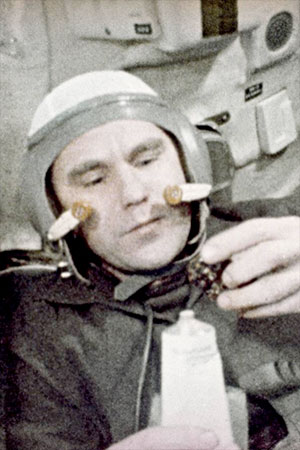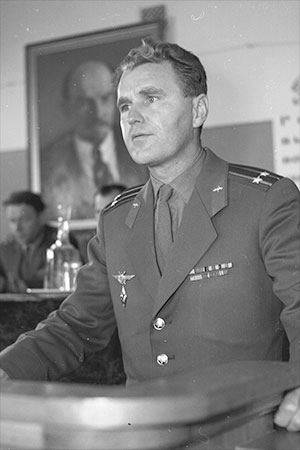 advertisements advertisements
|

|
Cosmonaut Vladimir Shatalov, who led 3 Soyuz missions, dies at 93
June 15, 2021 — Vladimir Shatalov, a Soviet-era cosmonaut who achieved the first-ever docking between two crewed spacecraft, has died at the age of 93.
Shatalov's death on Tuesday (June 15) was reported by Roscosmos, Russia's federal space corporation.
"The Roscosmos state corporation expresses condolences to the family and friends of Vladimir Shatalov. Everlasting memory!" the space agency wrote on its website.
Shatalov was chosen to train as a cosmonaut with the Soviet Union's second class of Air Force recruits in January 1963. Six years later, he launched alone on his first spaceflight, Soyuz 4, on a mission to rendezvous and manually dock with the Soyuz 5 spacecraft. On Jan. 16, 1969, the two vehicles met in orbit, beating the U.S. to the same feat by two months.
Soyuz 5 crewmates Yevgeny Khrunov and Aleksei Yeliseyev performed a spacewalk to transfer from their spacecraft to Soyuz 4. Despite some difficulties, the two cosmonauts made it safely across and joined Shatalov for the return to Earth. Soyuz 4 landed on Jan. 17, 1969, after being docked to Soyuz 5 for four hours and 35 minutes. (Boris Volynov stayed aboard and landed on Soyuz 5 the next day.)
Shatalov's next two missions were less successful. Lifting off on Soyuz 8 on Oct. 13, 1969, Shatalov and Yeliseyev were intended to repeat the docking and crew transfer that they performed on their first mission together, but equipment failures prevented linking up with Soyuz 7. The mission did mark the first time three crews were in space at the same time, with Soyuz 6 joining Soyuz 7 and 8 in orbit.
Soyuz 8 was the last to test hardware for a Soviet lunar landing, effectively ending the race to the moon with Shatalov and Yeliseyev's safe landing on Oct. 18, 1969.
Shatalov's third and final launch was in command of the first mission to the world's first space station. Soyuz 10 lifted off on April 22, 1971 with Shatalov, Yeliseyev and Nikolai Rukavishnikov on a flight to Salyut 1. The two-day rendezvous went as planned and the two spacecraft were soft docked, but a misalignment prevented the Soyuz from achieving a stable connection with the space station.
Instead of entering Salyut 1 as planned, Shatalov and his crewmates separated and returned to Earth after just two days on April 24, 1971. The landing brought an end to Shatalov's spaceflight career after logging a total of 9 days, 21 hours and 55 minutes in Earth orbit.
Vladimir Aleksandrovich Shatalov was born on Dec. 8, 1927 in Petropavlovsk, Kazakhstan. He graduated from the Kachinskoye Highest Military Aviation School for fighter pilots in 1949 and from the Air Force Academy in Monino near Moscow seven years later.
He was serving as the chief inspector pilot for the 48th Air Force Army when he was selected for the cosmonaut corps.
Before flying in space, Shatalov trained as a backup commander for the Voskhod 3 mission, which was canceled, and the backup for pilot Georgy Beregovoy on Soyuz 3, what became the first fully-successful mission of the then-new Soyuz spacecraft.
From 1987 through 1991, Shatalov served as the director of the Yuri Gagarin Cosmonaut Training Center at Star City. He retired from his military duty in 1992.
In recognition of this service to the Soviet space program, Shatalov was bestowed numerous awards and honors, including three Orders of Lenin and twice Hero of the Soviet Union. A small impact crater on the far side of the moon located to the west-southwest of Mare Moscoviense was named "Shatalov" in the cosmonaut's honor.
Shatalov was married to Musa Andreyevna Ionova, and together they had two children, Igor and Yelena. |
|

Cosmonaut Vladimir Shatalov aboard Soyuz 4 in January 1969, the first mission to dock two crewed spacecraft. (Roscosmos)

Soviet-era cosmonaut Vladimir Shatalov. (Roscosmos) |
|

© collectSPACE. All rights reserved.
|
|

|

|
